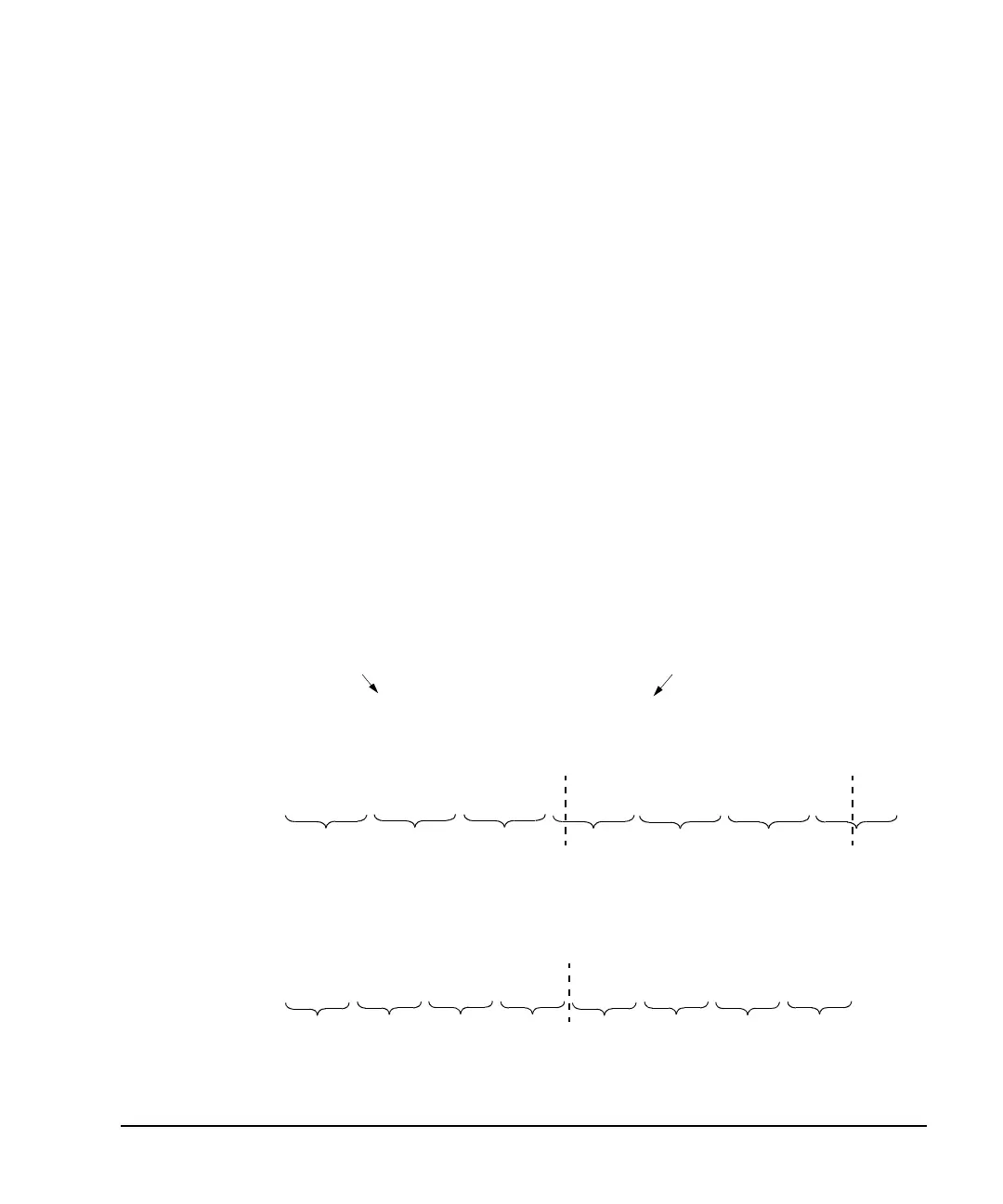Agilent N518xA, E8663B, E44x8C, and E82x7D Signal Generators Programming Guide 291
Creating and Downloading User-Data Files
User File Data (Bit/Binary) Downloads (E4438C and E8267D)
Binary File Type Data
With the Binary file type, the signal generator sees all of the bytes within the downloaded file and
attempts to use all of the data bits. When using this file type, the biggest challenge is creating the
data, so that the signal generator uses all of the bits (bytes) contained within the file. This is
referred to as using an even number of bytes. The method of creating the user file data pattern
depends on whether you are using unframed or framed data. The following two sections illustrate the
complexities of using the binary file format. You can eliminate these complexities by using the bit file
format (see “Bit File Type Data” on page 288).
Unframed Binary Data
When creating unframed data, you must think in terms of bits per symbol; so that your data pattern
begins and ends on the symbol boundary, with an even number of bytes. For example, to use 16QAM
modulation, the user file needs to contain 32 bytes:
• enough data to fill 16 states 4 times
• end on a symbol boundary
• create 64 symbols (the signal generator requires a minimum of 60 symbols for unframed data)
To do the same with 32QAM, requires a user file with 40 bytes.
When you do not use an even number of bytes, the signal generator repeats the data in the same
symbol where the data stream ends. This means that your data would not end on the symbol
boundary, but during a symbol. This makes it harder to identify the data content of a symbol. The
following figure illustrates the use of an uneven number of bytes and an even number of bytes.
16QAM 4 bits/symbol:
1 0 1 1 0 1 1 0 1 1 0 0 1 1 0 0
Symbol Symbol
Symbol
Symbol
1 0 1 1 0 1 1 0 1 1 0 0 1 1 0 0
1 0 1 1 0 1 1 0 1 1 0 0 1 1 0 0 1 0 1
Symbol
Symbol
Symbol Symbol
Symbol Symbol
Symbol
Data repeats during a symbol
1 0 1 1 0 1 1 0 1 1 0 0 1 1 0 0
Symbol Symbol
Symbol
Symbol
Data repeats at the symbol boundary
Unframed Data
32QAM 5 bits/symbol:
Even Number of Bytes
Uneven Number of Bytes
1 0 1 1 0 1 1 0 1 1 0 0 1 1 0 0
Data pattern:
Data
repeats
Using an uneven number of bytes makes it harder to identify the data within a symbol.
MSB
LSB

